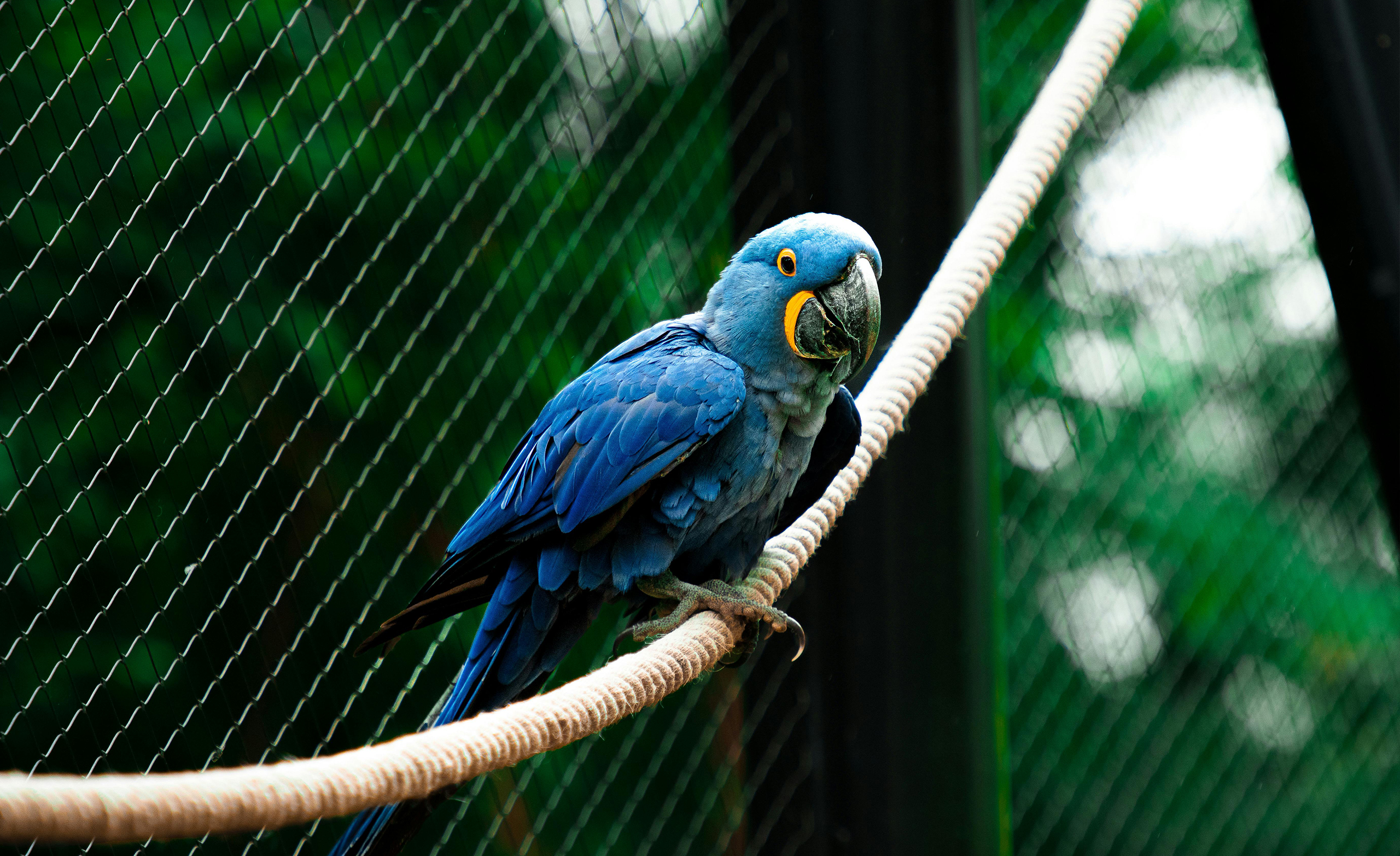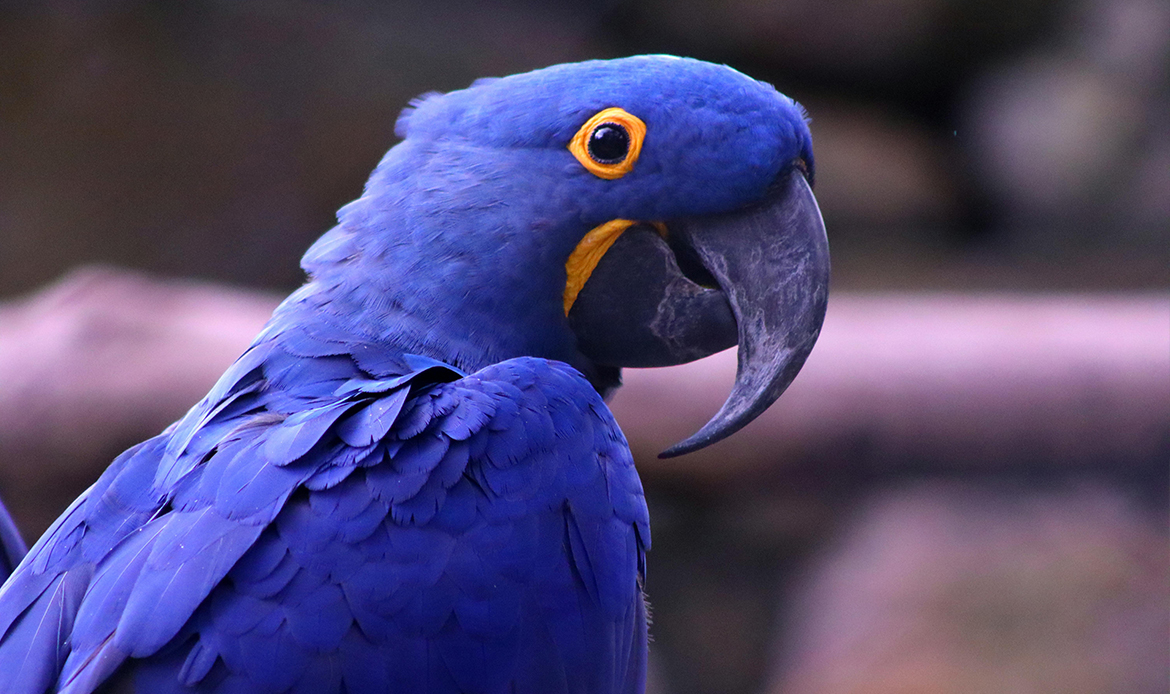
Hyacinth Macaw from Rainforests to Rescue Ensuring Their Protection.
The Hyacinth Macaw, often referred to as the “Blue King of the Rainforest,” is one of the most awe-inspiring birds on Earth. With its vibrant cobalt-blue feathers, piercing golden eye rings, and powerful personality, this bird captivates anyone lucky enough to observe it in the wild. Found primarily in South American rainforests, especially Brazil’s Pantanal wetlands and parts of the Amazon Basin, the Hyacinth Macaw is the largest flying parrot in the world.
However, beyond its beauty lies a harsh reality: the Hyacinth Macaw is an endangered species. This extraordinary parrot faces a myriad of threats in its natural habitat, but thanks to conservation efforts and global awareness, a glimmer of hope remains. In this blog, we’ll explore the challenges this species endures, the strides made to protect it, and what we all can do to help ensure its survival.
Table of Contents
A Closer Look at the Hyacinth Macaw
Scientifically known as Anodorhynchus hyacinthinus, the Hyacinth Macaw is a marvel of the animal kingdom. Spanning up to 100 cm (around 3.3 feet) in length, including its long tail feathers, and weighing up to 3.3 pounds, it is the largest parrot species in the world. Its vibrant blue plumage and striking yellow accents around its eyes and beak make it unmistakable.
One of the most fascinating features of the Hyacinth Macaw is its immense beak, engineered to crack the hard shells of fruits like the macaw palm (a critical food source). Its intelligence and social nature make it highly adaptable, yet unfortunately, not immune to human-induced threats.
The Challenges Threatening the Hyacinth Macaw
Despite its strength and adaptability, the Hyacinth Macaw has struggled against two formidable adversaries: habitat loss and illegal poaching.
1. Habitat Loss
Deforestation is one of the biggest threats to the Hyacinth Macaw. The bird depends on specific palm trees, particularly the macaw palm (Attalea phalerata), not only for food but also for nesting. Unfortunately, large-scale agricultural practices, logging, and cattle ranching have rapidly diminished these habitats. The Pantanal—one of the primary habitats of the Hyacinth Macaw—has been severely affected, with seasonal fires and farming altering the landscape.
2. Illegal Wildlife Trade
The exotic pet trade remains a significant threat to the Hyacinth Macaw. Its striking appearance has made it a much-sought-after prize for collectors. During the 1980s, an estimated 10,000 Hyacinth Macaws were captured and sold illegally, leaving a dramatic dent in their wild populations. Although international agreements such as CITES (Convention on International Trade in Endangered Species) regulate the trade of macaws, black market poaching still persists.
3. Competition for Nesting
The Hyacinth Macaw competes with other species, such as toucans and bees, for limited nesting sites. Since these birds often reuse the same hollow trees for generations, a lack of suitable nesting trees impacts their reproductive success.

Conservation Efforts: A Beacon of Hope
While the challenges facing the Hyacinth Macaw are daunting, they are not insurmountable. Thanks to dedicated conservation groups and local efforts, the Hyacinth Macaw is slowly making a comeback.
The Hyacinth Macaw Project
One of the most significant conservation initiatives is the Hyacinth Macaw Project (Projeto Arara Azul), which was established in 1990 by ornithologist Dr. Neiva Guedes. This project focuses on monitoring wild populations, protecting habitats, and installing artificial nest boxes to encourage breeding. These nest boxes have been a game-changer in boosting reproduction rates.
Community Engagement
Conservationists have realized that involving local communities is key to protecting the Hyacinth Macaw. Educational programs teach locals about the bird’s importance to the ecosystem and how they can coexist with it. By offering economic incentives for eco-tourism or sustainable farming, these programs encourage locals to become protectors rather than threats to the species.
Protected Areas
Several reserves and national parks have been created to protect the natural habitats of the Hyacinth Macaw. For example, the Pantanal, a UNESCO World Heritage site, is now closely monitored to reduce destructive practices such as fires and unregulated agriculture.
Climate Change and Future Challenges
While current conservation programs have yielded positive results, new challenges loom on the horizon. Climate change poses a growing risk, as rising temperatures and unpredictable rainfall can disrupt the seasonal cycles that the Hyacinth Macaw relies on for breeding and feeding. Long-term solutions will require adaptive conservation methods that address unpredictable environmental shifts.
One crucial future strategy involves reforestation and habitat restoration. Planting native trees such as the macaw palm will not only restore food sources but also create new nesting opportunities for these birds. Similarly, greater international efforts to combat wildlife trafficking and reduce global deforestation are more urgent than ever.
How You Can Help
While large-scale conservation efforts require expertise and funding, individuals can make a difference too:
- Support Conservation Organizations: Donate to trusted organizations such as the Hyacinth Macaw Project or World Wildlife Fund (WWF).
- Spread Awareness: Share information about the plight of these birds, encouraging others to support conservation initiatives.
- Choose Responsible Tourism: When traveling to areas like Brazil or Bolivia, engage in eco-tourism programs that contribute directly to conservation.
- Boycott Exotic Pets: Do not support the illegal wildlife trade by purchasing exotic species or products derived from them.
The Road Ahead
Despite its tumultuous past, the Hyacinth Macaw is a symbol of resilience. Efforts to restore its population prove that even species teetering on the brink of extinction can rebound with human intervention and compassion. However, the road ahead is long, requiring dedication, funding, and international cooperation.
The Hyacinth Macaw, with its vibrant blue wings spread against the green backdrop of the rainforest, is more than just a bird—it’s an emblem of what’s at stake in the battle to preserve biodiversity. Protecting the Hyacinth Macaw is not just about saving a species; it’s about safeguarding ecosystems, supporting local communities, and learning to coexist harmoniously with the wild.
With continued effort, the Hyacinth Macaw, the awe-inspiring “Blue Gem of the Rainforest,” will continue to soar, reminding us of nature’s splendor and its fragile balance. Let us rise to the challenge and ensure that future generations have the privilege of witnessing this magnificent bird in its natural habitat.
By protecting the Hyacinth Macaw, we protect far more than a single species; we preserve the beauty and complexity of the world’s rainforests, one of Earth’s most precious treasures. The time to act is now. Will you answer the call to protect this remarkable bird?
